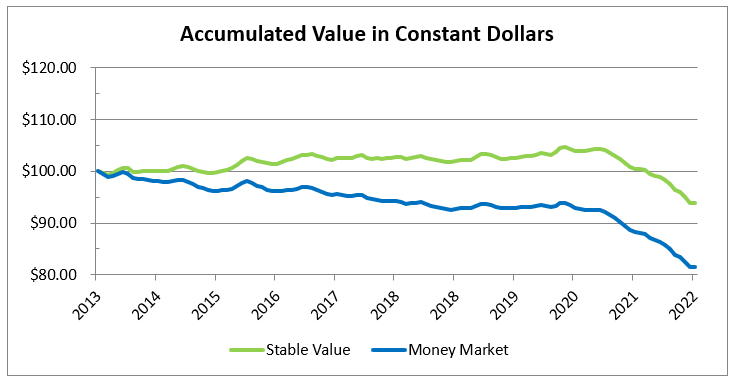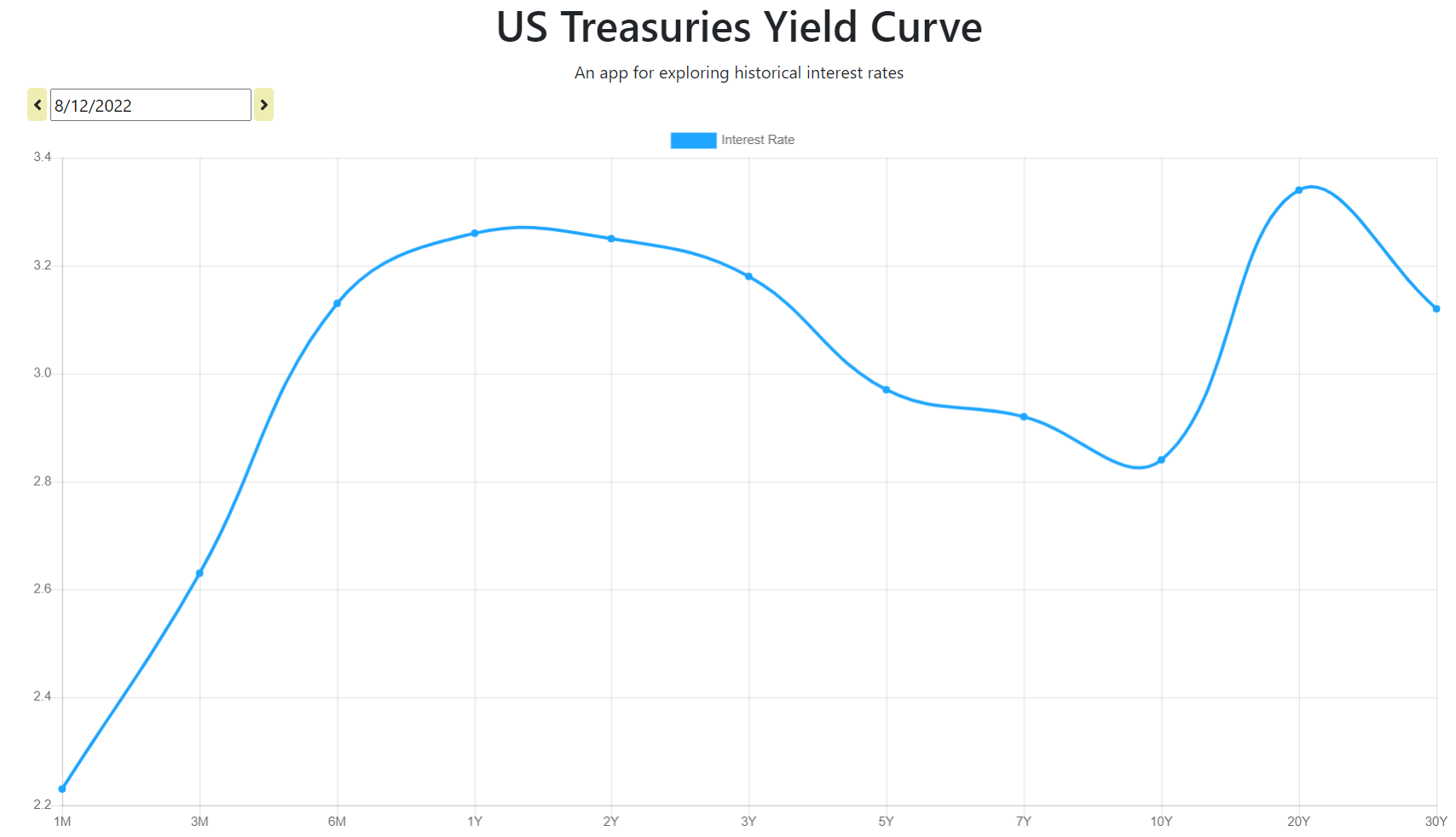MetLife Retirement & Income Solutions
Inflation in the United States continued to run hot through the summer, touching a high of 9.1% in June before moderating a bit to 8.5% in July.(1) The loss of real purchasing power combined with relatively low interest rates has brought pain to consumers and fixed income investors alike. The chart below compares the growth of $100 invested in stable value and money market for the ten-year period ending 7/31/2022, adjusted for inflation. Over the past ten years, investments in Money Market Funds have consistently lost purchasing power while Stable Value investments have been able to maintain their value in real terms until recently.(2)
As was widely anticipated, the Fed raised the discount rate by 0.75% on July 27th, bringing the target benchmark rate to 2.25%-2.50%. Following the Fed announcement, the Bureau of Economic Analysis revealed that the U.S. economy shrank again in the second quarter, down 0.9%. This combined with other negative economic news has caused the yield curve to invert further.(6) In the near term, the rate hikes should continue to benefit Money Market Funds, as their yields will react quicker to increases when the shorter underlying assets mature and are reinvested at higher rates. For Stable Value, the inverting of the yield curve is a mixed bag. Stable Value invests at the intermediate part of the yield curve, and current rates are higher than what were available in prior years so crediting rates should rise as maturing assets are reinvested. Additionally, the inversion of the yield curve has been partially due to intermediate yields falling so market to book value ratios should stabilize and start to improve as deficits are amortized. However, if the Fed continues to hike rates, Money Market rates may continue to rise quickly and may temporarily overtake Stable Value rates until the yield curve reverts back to normal.
Since the July Fed rate hike announcement, equities have risen higher and intermediate- to long-term yields have dropped. Many investors are convinced that the Fed’s comments after the Federal Open Market Committee (FOMC) meeting on July 27, 2022, in addition to the negative economic readings, indicate that the Fed may be close to a pivot “in order to curtail the risk of recession.” Other analysts believe that the Fed is nowhere near pivoting and further outsized rate hikes are necessary to tame inflation, which is still running extremely hot.(7) As the market increasingly is dependent on Fed decisions, ironically, negative economic news may drive rates lower but lead to higher inflation and vice versa for positive economic news.
During times of market uncertainty, many investors might consider it prudent to protect a portion of their assets with Stable Value. Because Stable Value is a capital preservation option in a defined-contribution (DC) plan with regular ongoing contributions, those contributions get invested at higher yields as rates rise, helping to mitigate the impact of the rate increases on the portfolio and the crediting rate. For DC plan participants, Stable Value provides full liquidity, principal protection, and a guaranteed interest rate.



